The Urban Lens: Vintage photos show the New York Times’ 1940s printing process
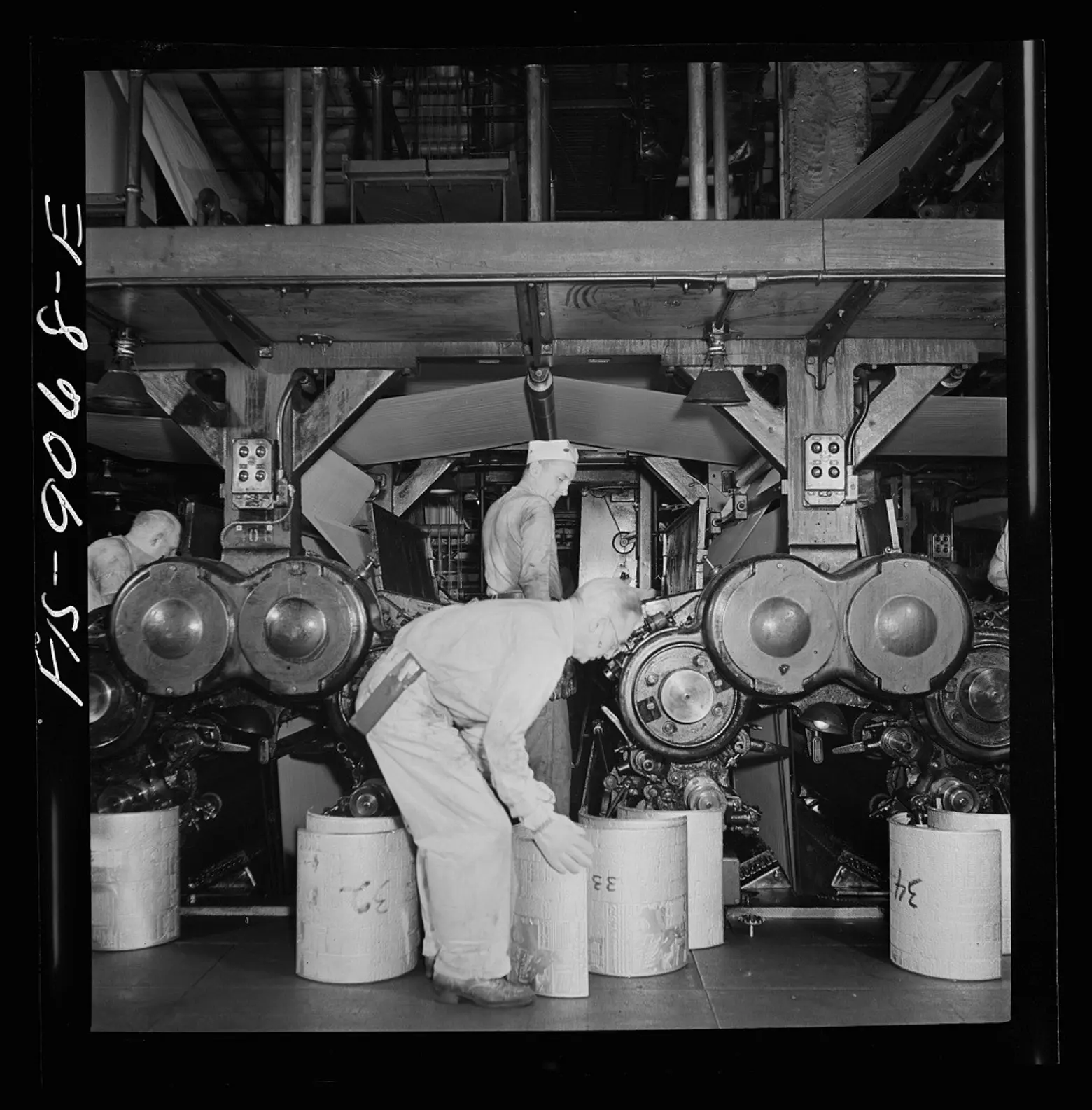
Pressroom. Numbering cast plates with page numbers for identification.
In September 1942, with humanity in the throes of WWII, one Marjory Collins photographed the inner workings of the New York Times for the U.S. Office of War Information. Her photos depict a culture of white men and machines working at individual tasks for the greater goal of creating the day’s paper. The press printing process shown is a world apart from today’s digital media industry, where so many human jobs have been antiquated by more advanced technology, which is, thankfully, more diverse.
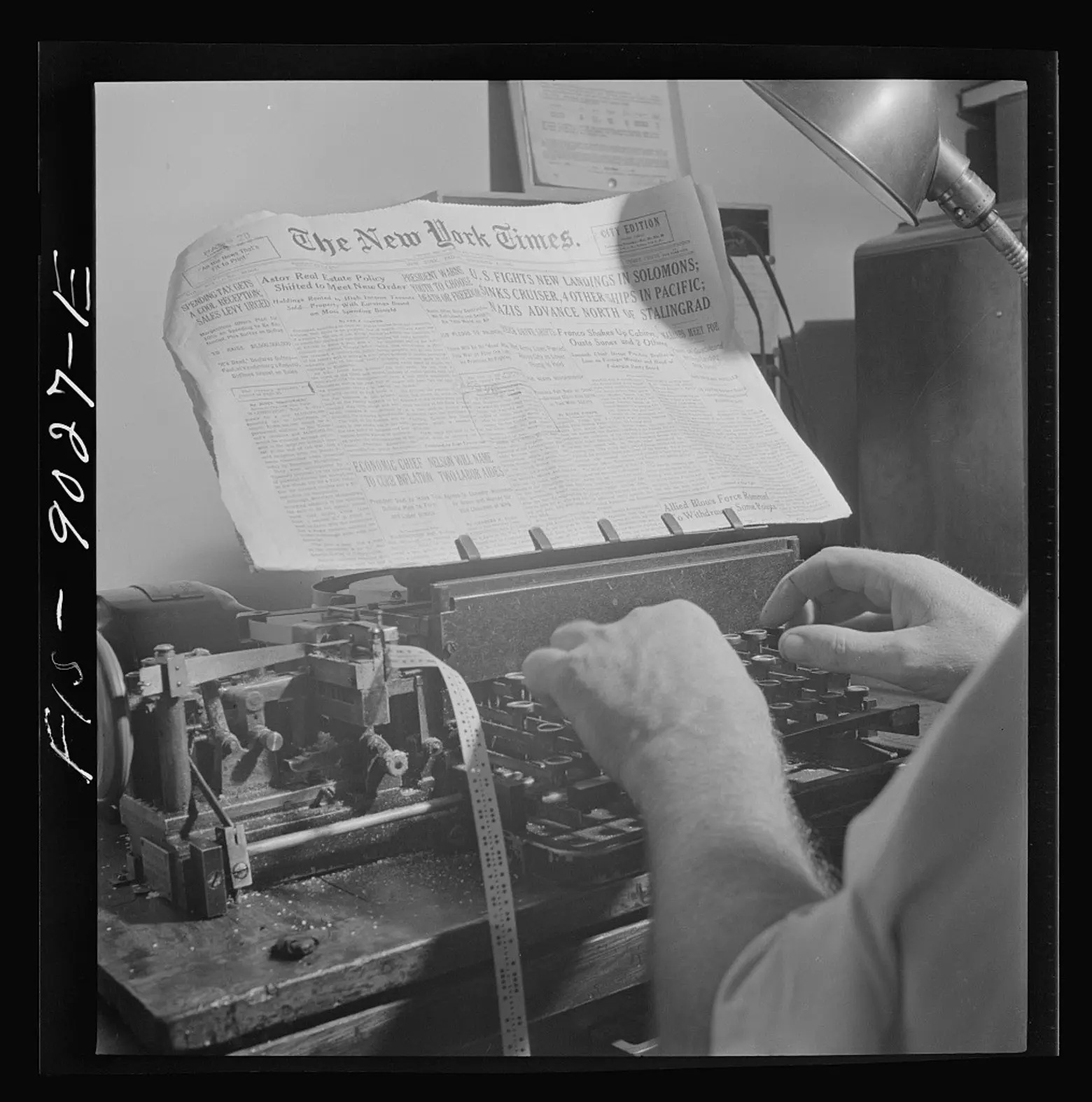 Radio room via the Library of Congress. “Times news passed by naval censor (see stamps on paper) is sent out twice daily by the Times’ own shortwave radio transmitter in international Morse code, and received by ships.”
Radio room via the Library of Congress. “Times news passed by naval censor (see stamps on paper) is sent out twice daily by the Times’ own shortwave radio transmitter in international Morse code, and received by ships.”
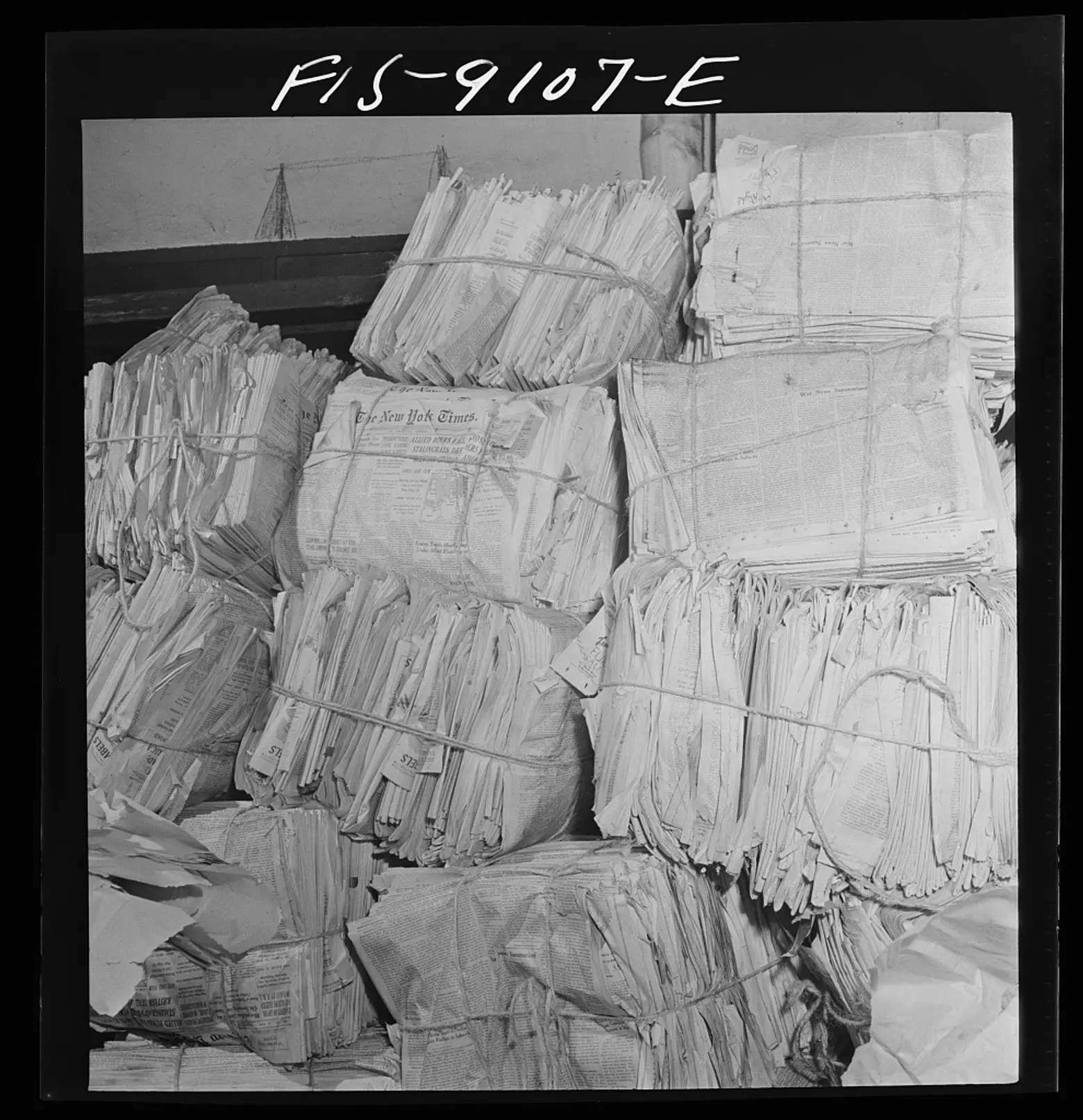 Mailroom. Unsold copies of paper are returned, sold for scrap.
Mailroom. Unsold copies of paper are returned, sold for scrap.

Pressroom. Numbering cast plates with page numbers for identification.
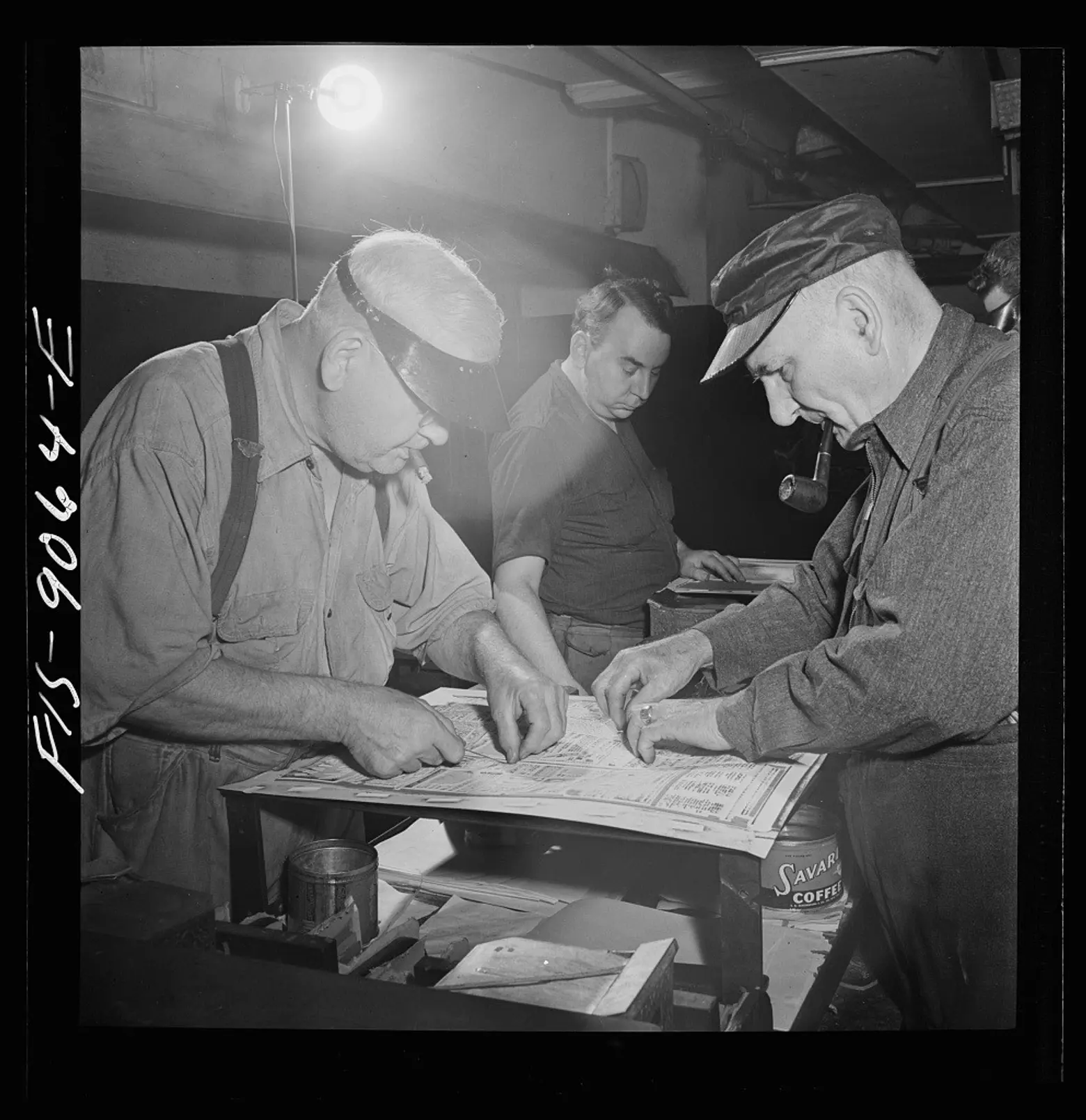
Stereotype room. Packing mats with felt to obtain clean-cut casing.

New York Times newspaper syndicate. Argentine, Swiss and Mexican correspondents.
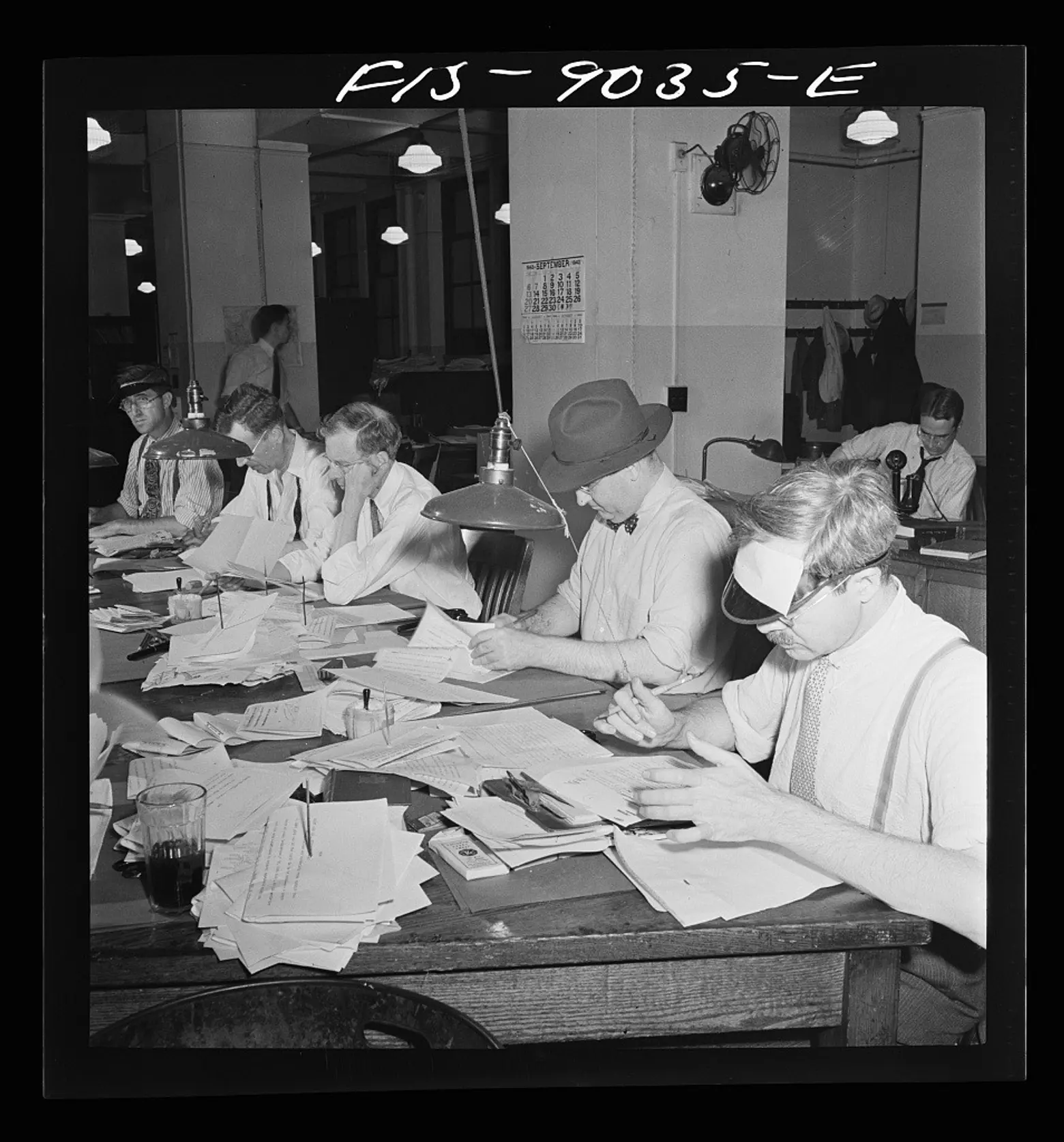
Newsroom. Copy readers at the telegraph desk which handles all dispatches from the U.S. outside New York City. Man wears hat because of draught.
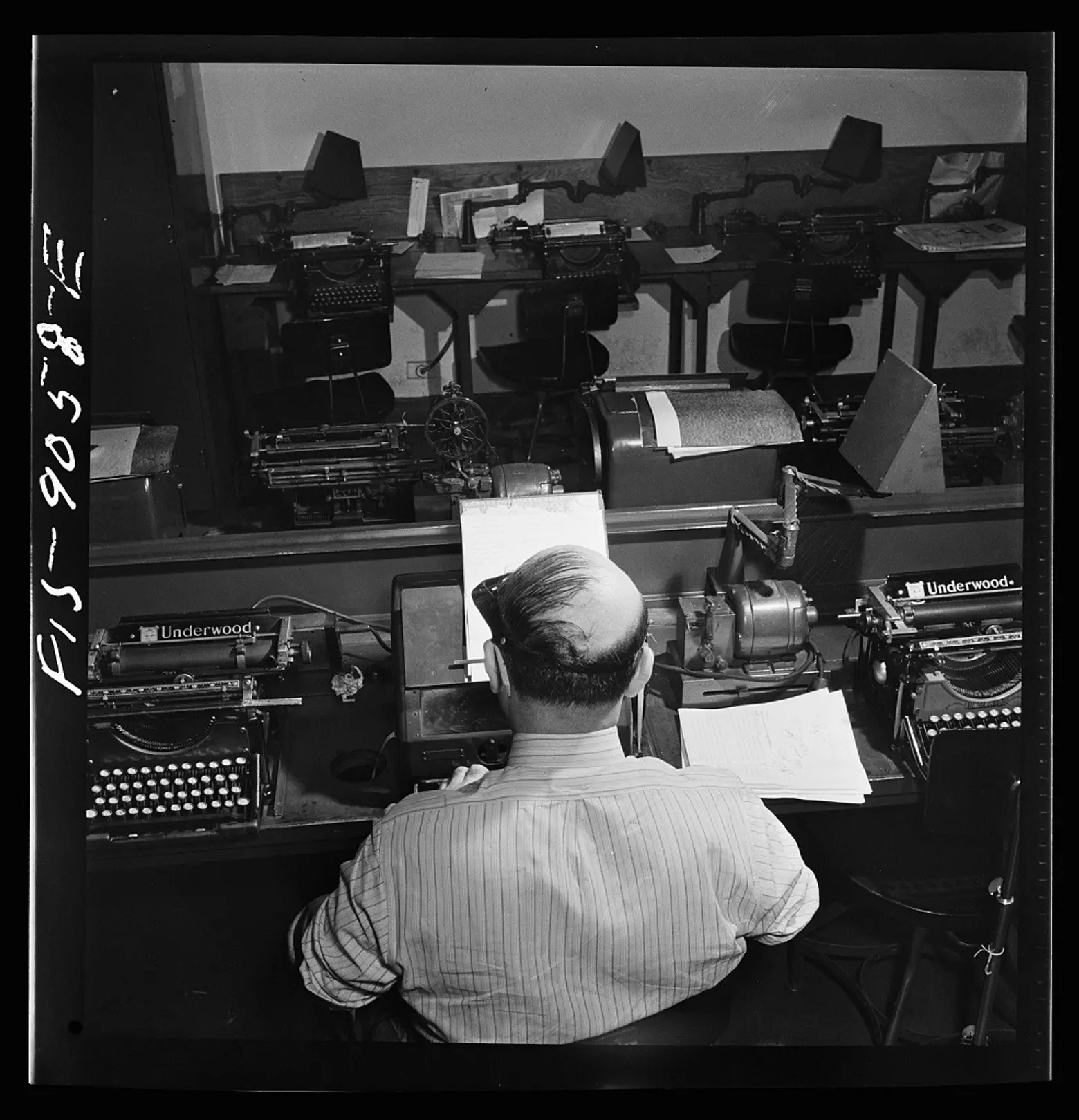
Wire room. Telegrapher receives dispatch by Western Union from Times correspond somewhere in the United States.
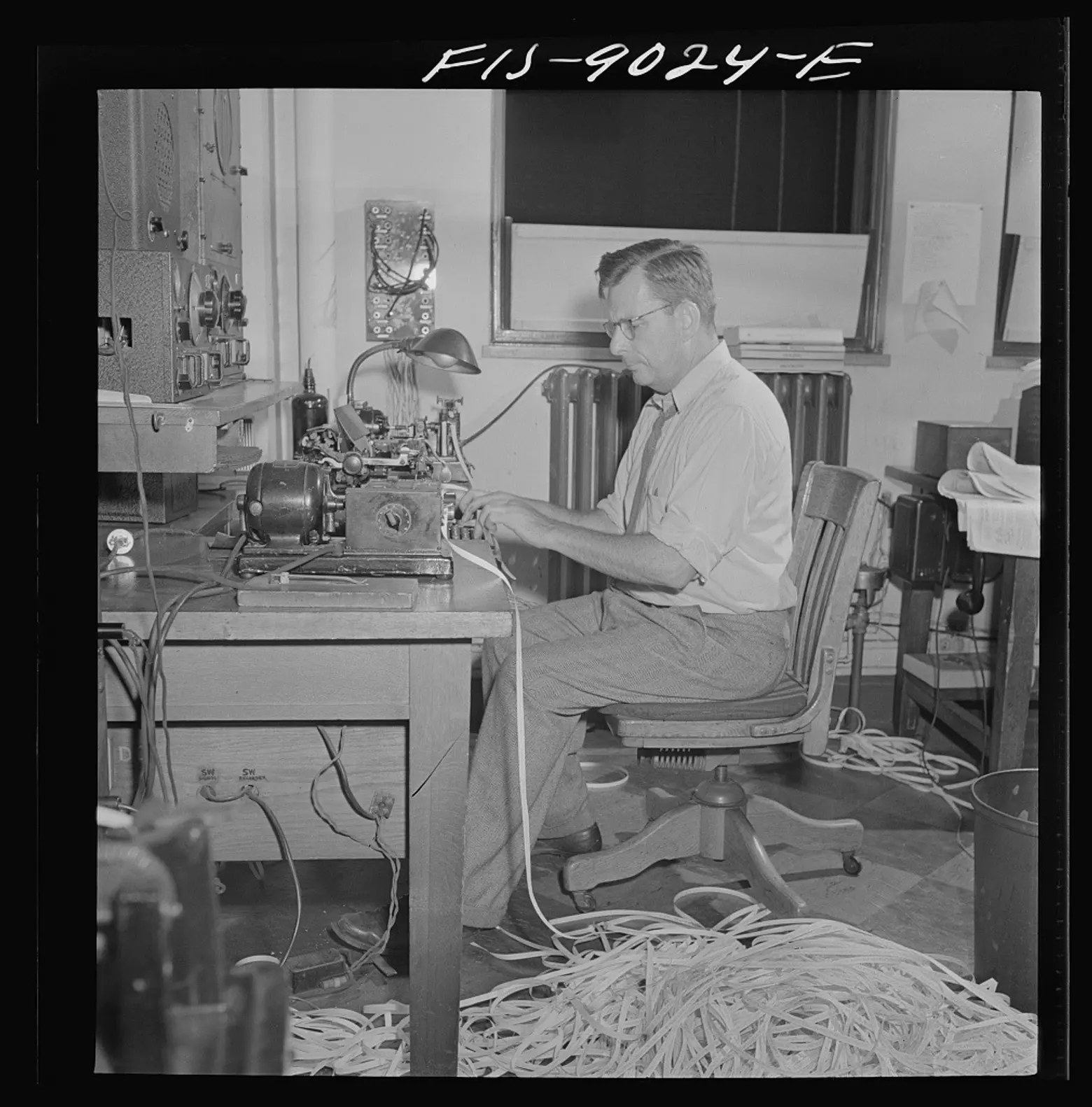
Radio room. “The Times listening post, between 10 and 12 PM, between first and second editions. The operator is listening to Axis news (propaganda) broadcast. Paper in foreground has been previously examined to see what has already been covered in last edition of paper. Operator reports any new angles to city editor. Messages are recorded in tape in international Morse code.”
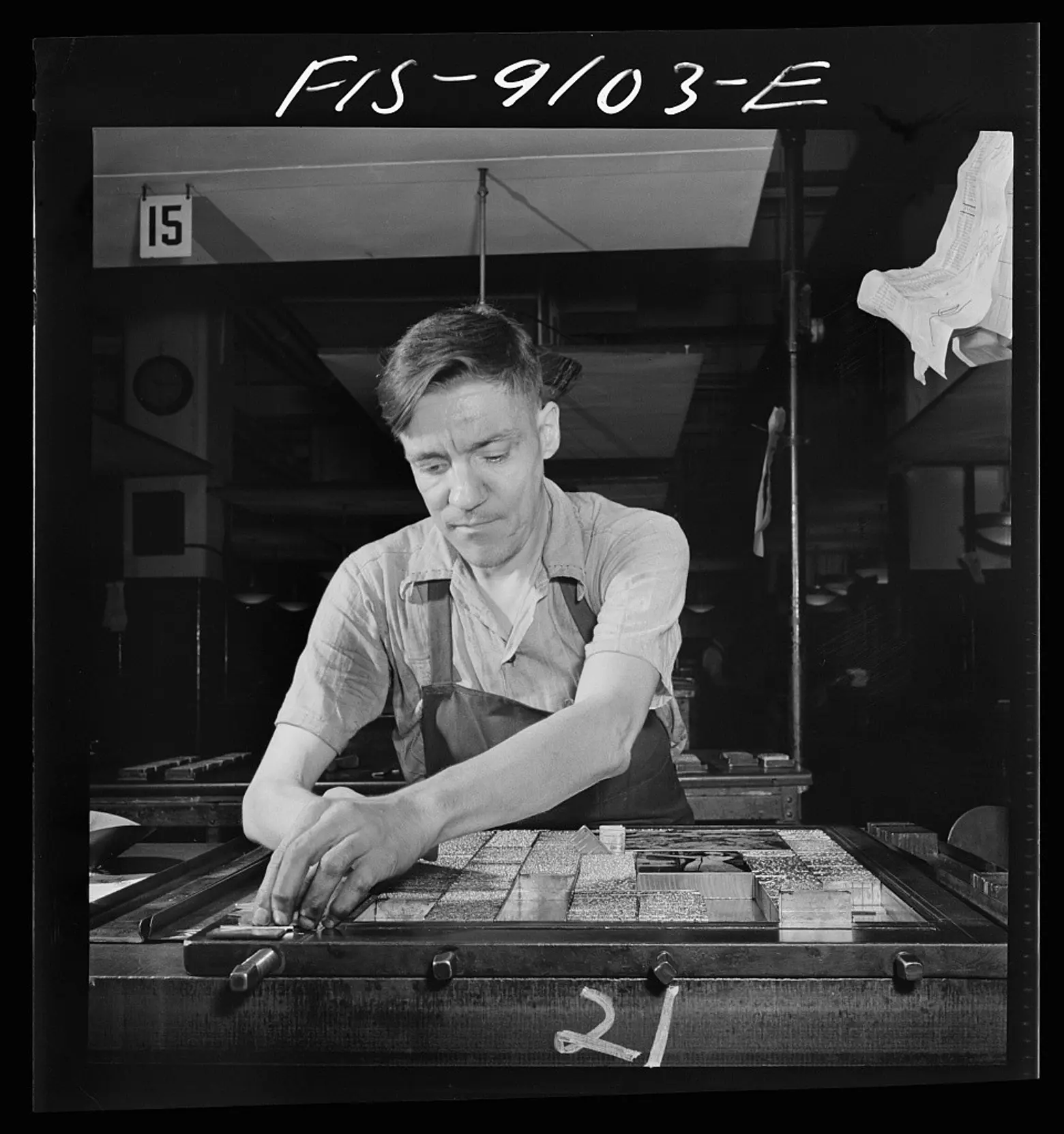
Composing room. Making up the sports page.
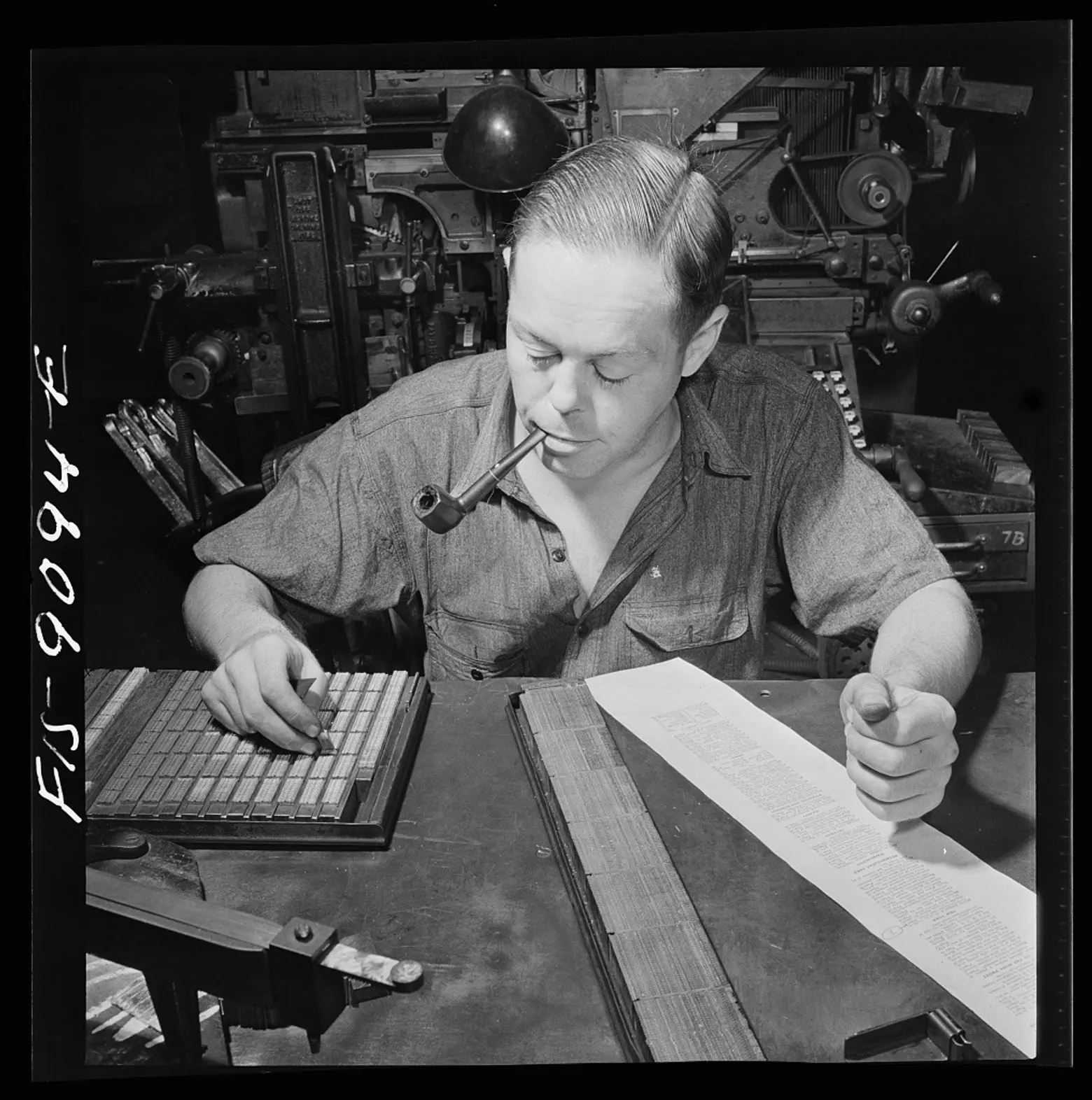
Composing room. Times daily index to the news is set partly by hand. This man has been doing it for fifteen years.
RELATED:
- The Urban Lens: Nei Valente’s ‘Newsstands’ shows the changing face of media
- The Urban Lens: Vintage NYC photos show everyday life in the 1940s
- The Urban Lens: Explore the whimsical photography of Todd Webb with former LIFE editor Bill Shapiro
All photos via the Library of Congress
Get Insider Updates with Our Newsletter!
Leave a reply
Your email address will not be published.
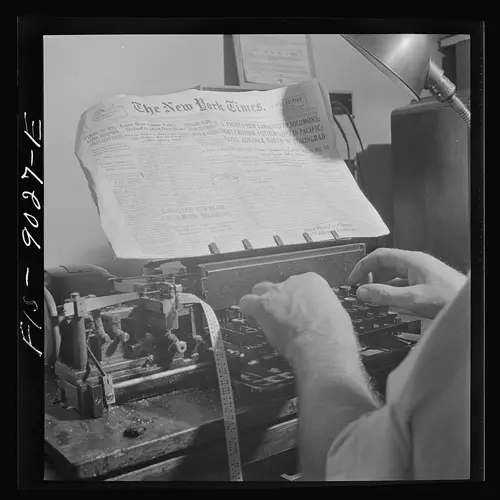
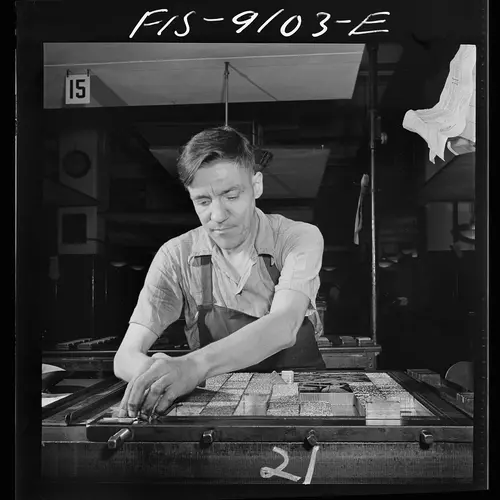
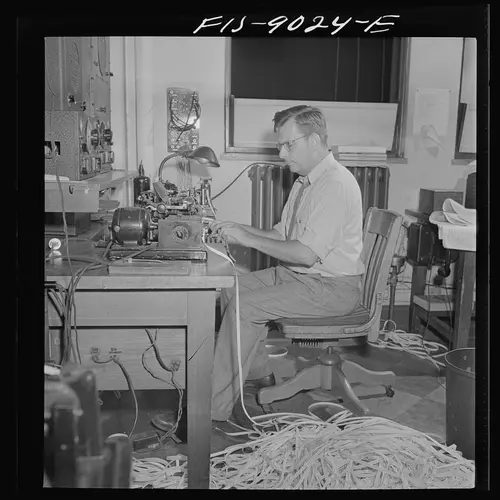
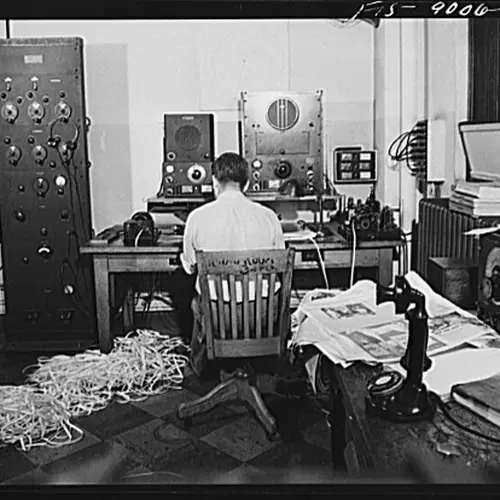
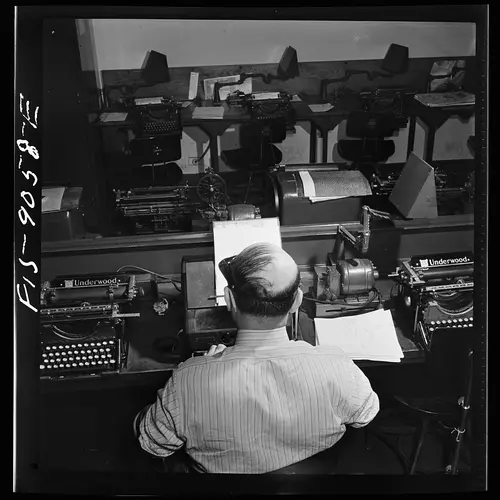
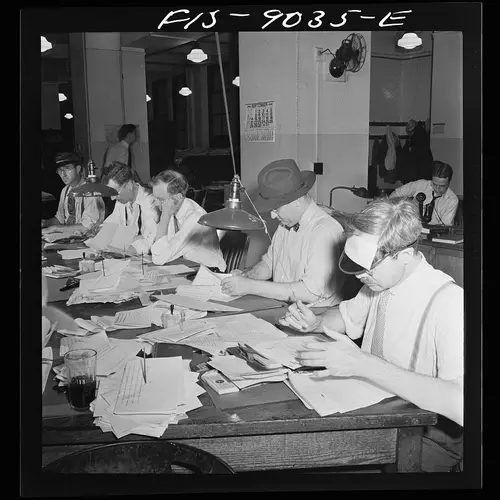

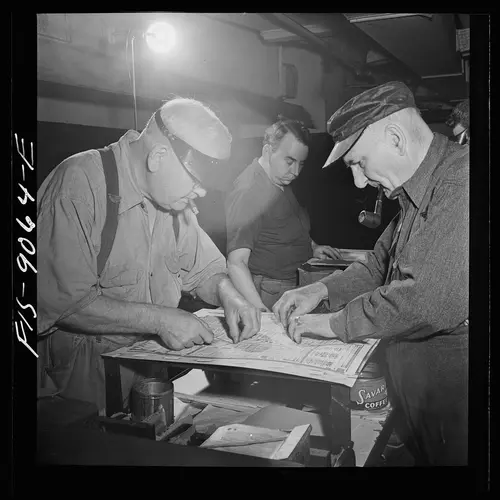
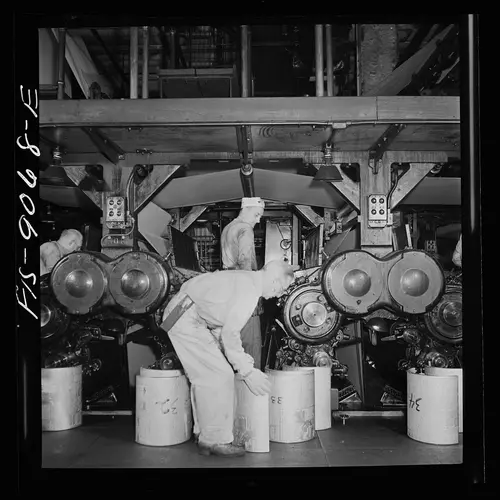
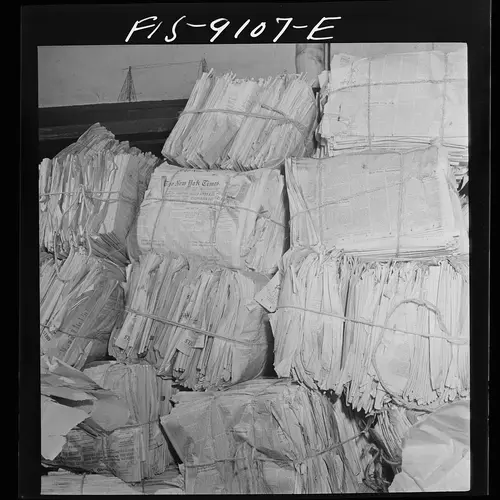
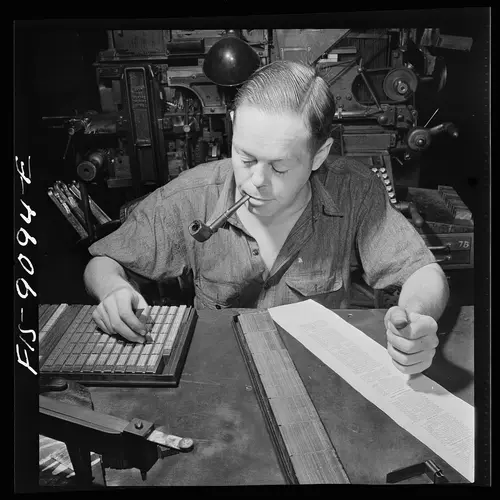












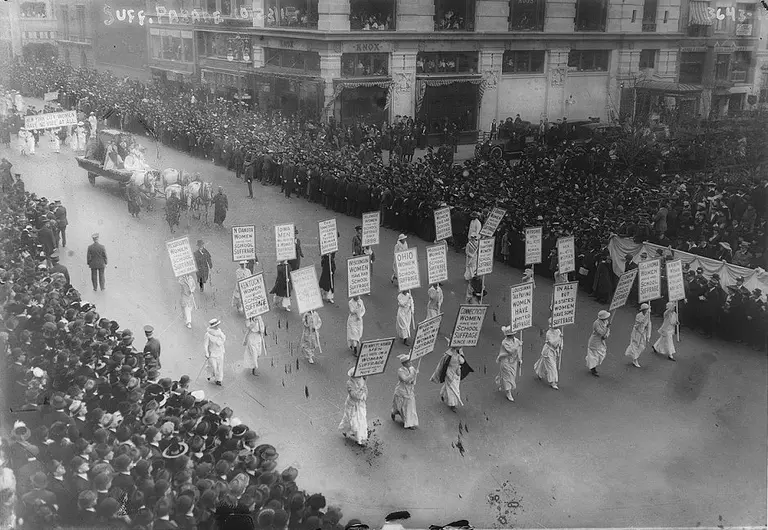














A depressingly large number of these photos are familiar to me, because starting in the late 1960s I did advertising production on all sorts of trade and consumer magazines. Everything I learned about—composition, hot type, Monotype, engravings, sheetfed and roll-fed letterpress and offset printing, etc., etc.—is now obsolete, sigh.
Once the type and plates for a convention issue would have fit into several tractor trailers. Then, you could hold the negatives in the palm of your hand. Now, even those are gone, replaced by digital images transferred via e-mail to distant printers.
I’ll be sharing the link here with a bunch of interested people and Yahoo groups I’m in.
Here’s one of the tools-of-the-trade I used, to determine halftone screen sizes:
https://uploads.disquscdn.com/images/16ec4a8848de5a3ed60c93bd789b5cc79326e23cdbe463ddfa0e78073888d7d0.jpg